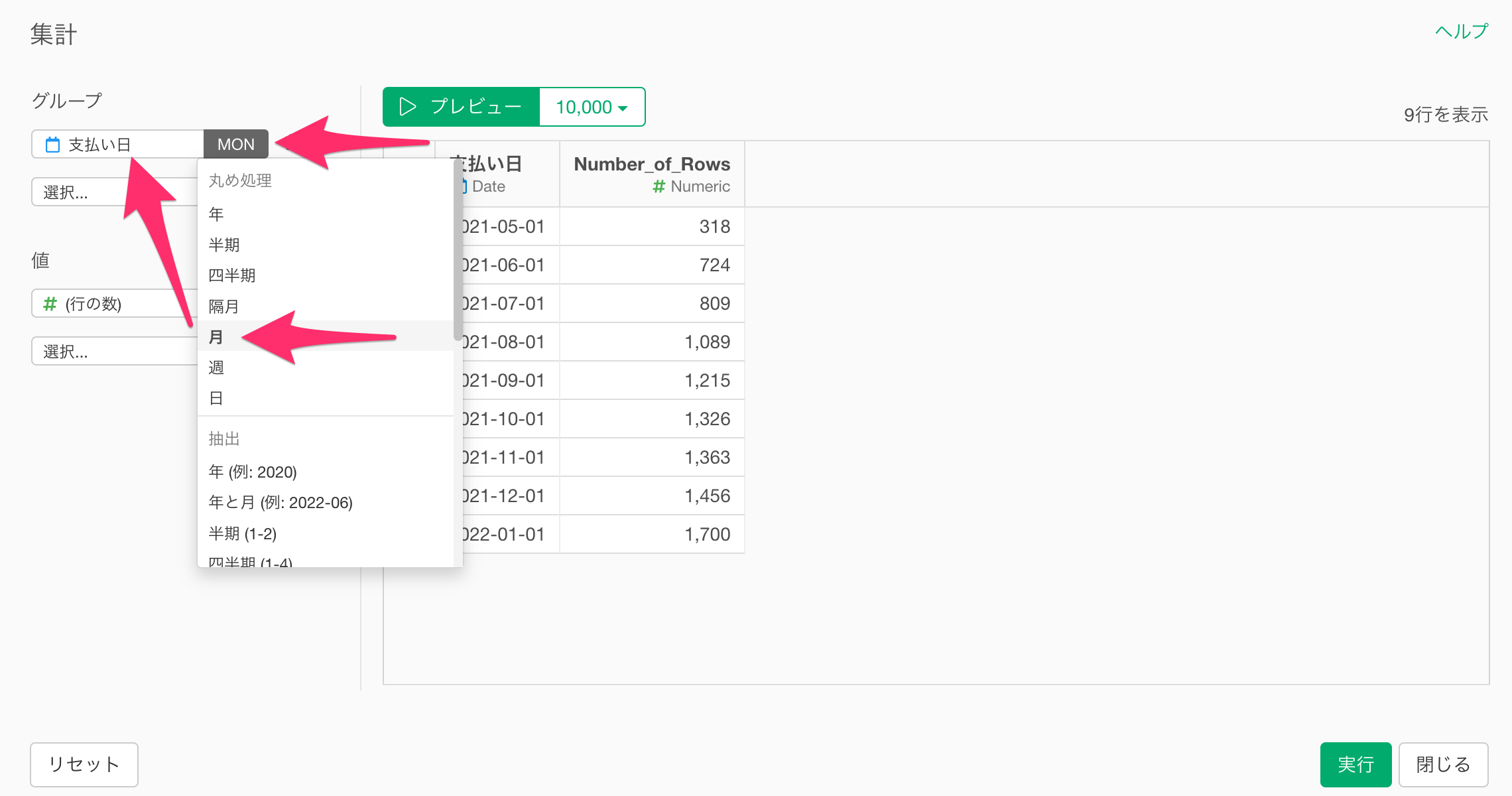MRR Retention Rate
In subscription businesses, the MRR retention rate is a crucial indicator of customer base health.
This metric shows how much of the MRR (Monthly Recurring Revenue) from existing customers is being maintained, and is used to understand revenue decline due to cancellations or downgrades. It’s especially essential for SaaS business managers, customer success teams, and finance department leaders to evaluate business sustainability.
Particularly in the SaaS industry, where new customer acquisition costs are high, maintaining existing customers significantly impacts profitability, making continuous monitoring indispensable.
The MRR retention rate can be calculated as follows: divide the MRR obtained from existing customers, minus the amount of revenue increase from expansion, by the previous month’s MRR.
$ = $
How to Calculate MRR Retention Rate
Data Overview
We’ll use payment data from a subscription-based business. The data can be downloaded from this page.
In this dataset, each row represents a customer’s monthly payment history, with columns containing the following information:
- Customer ID
- Payment Date
- Payment Plan
- Payment Amount
Preparation
We’ll create a table like the one below to calculate the MRR retention rate:
To create this table, we’ll start with payment data that has been augmented with payment count and expansion/contraction information in steps 2-4, and then calculate the MRR retention rate.
The method for calculating payment count can be found here, and the method for calculating expansion and contraction can be found here.
Since we want to aggregate MRR, MRR from existing customers, and expansion, select “Aggregate” from the “Payment Date” column header.
In the aggregation dialog, select “Payment Date” for the group and “Month” for rounding.

MRR (Monthly Recurring Revenue) is the monthly total of payments made by each user, so select “Payment Amount” for the value and SUM for the aggregation function.
Then, change the column name to MRR.
Next, we’ll aggregate MRR from existing customers.
MRR from existing customers is the MRR obtained from customers who have made two or more payments, so we’ll aggregate the sum of payment amounts from customers with two or more payments.
Add “Payment Amount” to the value and select “Conditional Sum (SUM_IF)” for the aggregation function.
A dialog to specify conditions will appear. Enter “Payment Count” for the column, “Greater than or equal to” for the operator, and “2” for the value.
Then set the column name to “MRR from Existing Customers” and apply and execute.
We have now aggregated MRR from existing customers.
Finally, select “Expansion” for the value, choose SUM for the aggregation function, and execute.
We’re now ready to calculate the MRR retention rate.
Calculating MRR Retention Rate
From the “MRR from Existing Customers” column header menu, select “Create Calculation” then “Standard”.
In the calculation creation dialog, enter
(MRR from Existing Customers - Expansion) / lag(MRR) in the
calculation editor.
Note that the lag function retrieves the value from the previous row
of the specified column, so lag(MRR) calculates the value
from the previous month, i.e., the previous month’s MRR.
Finally, ensure “Create a new column” is checked, set the column name to “MRR Retention Rate”, select “After the last column” for “Create after this column”, and execute.
We have now calculated the “MRR Retention Rate”.
Calculating MRR Retention Rate (R Code)
For Payment Data
If you want to calculate the MRR retention rate using a custom R command with this payment data, please refer to the following R code:
R Command to Calculate MRR Retention Rate
# Step 1: Calculate payment count for each customer
mutate_group(
# Group by Customer ID
group_cols = c(`customer_id` = "customer_id"),
group_funs = c("none"),
# Sort by payment date
sort_cols = c("payment_date"),
sort_funs = c("none"),
`payment_count` = dplyr::dense_rank(`payment_date`), # Rank payment dates to calculate payment count
`payment_amount_difference` = payment_amount - dplyr::lag(payment_amount) # Calculate difference from previous payment amount
) %>%
# Step 2: Change payment date to monthly units
# When calculating monthly MRR retention rate, truncate the date to "month"
mutate(`payment_date` = floor_date(`payment_date`, unit = "month")) %>%
# Step 3: Aggregate MRR and MRR from existing customers monthly
group_by(`payment_date`) %>%
summarize(
MRR = sum(`payment_amount`, na.rm = TRUE), # Calculate total monthly MRR
`MRR_from_existing_customers` = sum_if(`payment_amount`, `payment_count` >= 2), # MRR from customers with 2 or more payments
`expansion` = sum_if(`payment_amount`, `payment_amount_difference` > 0) # Increase from additional purchases or upsells
) %>%
ungroup() %>%
# Step 4: Calculate MRR Retention Rate
mutate(
`MRR_retention_rate` = (`MRR_from_existing_customers` - `expansion`) / lag(MRR)
)R Command to Calculate MRR Retention Rate by segment
# Step 1: Calculate payment count for each customer
mutate_group(
# Group by Customer ID
group_cols = c(`customer_id` = "customer_id"),
group_funs = c("none"),
# Sort by payment date
sort_cols = c("payment_date"),
sort_funs = c("none"),
`payment_count` = dplyr::dense_rank(`payment_date`), # Rank payment dates to calculate payment count
`payment_amount_difference` = payment_amount - dplyr::lag(payment_amount) # Calculate difference from previous payment amount
) %>%
# Step 2: Change payment date to monthly units
# When calculating monthly MRR retention rate, truncate the date to "month"
mutate(`payment_date` = floor_date(`payment_date`, unit = "month")) %>%
# Step 3: Aggregate MRR and MRR from existing customers monthly
group_by(`payment_date`, `segment`) %>%
summarize(
MRR = sum(`payment_amount`, na.rm = TRUE), # Calculate total monthly MRR
`MRR_from_existing_customers` = sum_if(`payment_amount`, `payment_count` >= 2), # MRR from customers with 2 or more payments
`expansion` = sum_if(`payment_amount`, `payment_amount_difference` > 0) # Increase from additional purchases or upsells
) %>% ungroup() %>%
# Step 4: Calculate MRR Retention Rate by Segment
group_by(`segment`) %>%
mutate(
`MRR_retention_rate` = (`MRR_from_existing_customers` - `expansion`) / lag(MRR)
)